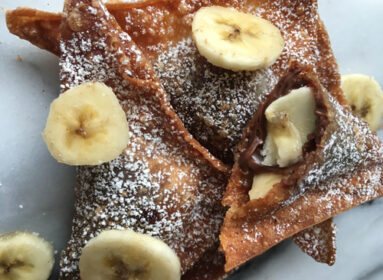By Rabbi Yossi Pollak, spiritual leader of Beit Chaverim Synagogue of Westport/Norwalk, offers a few tips on keeping a kosher Passover. ~
Pre-Pesach kashering
The main steps are self-cleaning your oven and covering or steam-cleaning counter-tops. There are many good guides online. I recommend these:
The OU: www.oukosher.org/index.php/passover
Star-K: www.star-k.org/cons-pesach.htm
CRC (Chicago Rabbinical Council): www.crcweb.org
Quinoa and other “disputed” foods
Some rabbinic organizations do not recommend quinoa, mostly because of the possibility that chametz could be mixed in. My personal practice is to permit it. Some kashrut organizations like the CRC recommend specific brands that they have verified are not produced on the same lines as chametz products, but they recommend visually inspecting the quinoa grains for chametz before Passover begins.
Other disputed items usually fall into the realm of “kitniyot,” those that might be prohibited for Ashkenazim. For example, most people do not use cumin, caraway, anise, or fennel seeds because of a ruling by the Mishna Berura – also known as the Chafetz Chayim – although fennel itself is usually permitted. Some rabbinic authorities prohibit coriander, although others, including the OU, permit it.
One other disputed item is egg matzah or “matzah ashira,” which is matzah that is made with a juice instead of water. The general Ashkenazi practice is that “matzah ashira” is only consumed by children and by those who are elderly or sick. However, there is no question that matzah ashira or egg matzah produced under reliable kosher-for-Passover supervision is not chametz.
On “gebrocht,” “mish,” and other restrictions
Gebrocht refers to products made with matzah that comes into contact with liquid. When matzah is produced, care is taken to make sure that the matzah is finished baking within 18 minutes from the moment that water first comes into contact with the flour. The concern with gebrochts is that there may have been some grains of flour that remained on the matzah after it was baked. After mixing that matzah with water, such as with matzah balls, there is a concern that those grains of flour may begin to rise and become chametz. Those who do not have the custom to avoid gebrochts should not be concerned, as this is not necessarily the majority practice, but if your guests tell you that they can’t eat your matzah balls or stuffing because it contains gebrochts, don’t be offended; they’re not questioning your home’s kashrut, they’re just following their own custom.
There are a number of practices like this. For example, in some communities they say that they “don’t mish,” which means, I believe, that they don’t eat outside of their own homes on Pesach.
Another stringency is not to use any fruits or vegetables that have not been peeled in case there was chametz that came into contact with the outside, or in case there was a chametz wax or spray that might have been applied to the outside – though all fruits and vegetables should be washed because of this concern. Other communities do not use potatoes at all.
These stringencies are usually not intended to suggest that the standard or more common practice is inadequate, but rather reflect a custom that developed in a specific community and is being maintained by future generations of that community.
I’d also say that things like kashering are related to community standards, and one should contact his or her community rabbi for questions of community practice or specific questions that might not be covered in these guides, or discrepancies between the guides.
Of course, I’m also available for specific questions: ravyossi@optonline.net







 Southern New England Jewish Ledger
Southern New England Jewish Ledger














